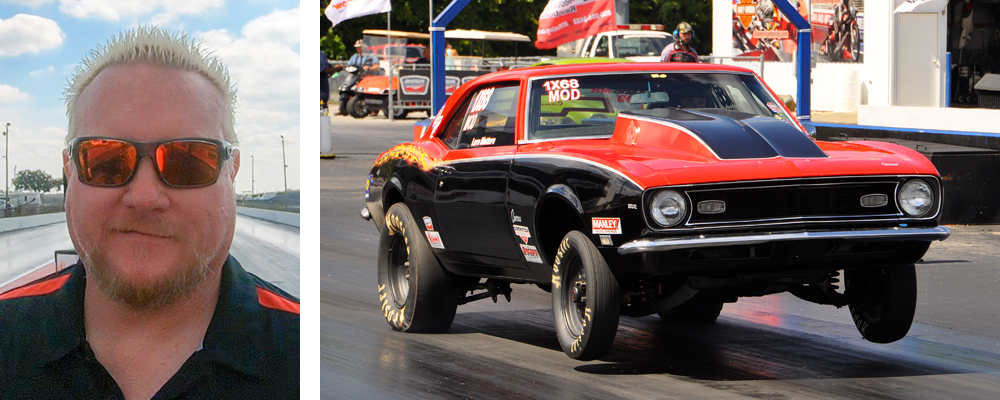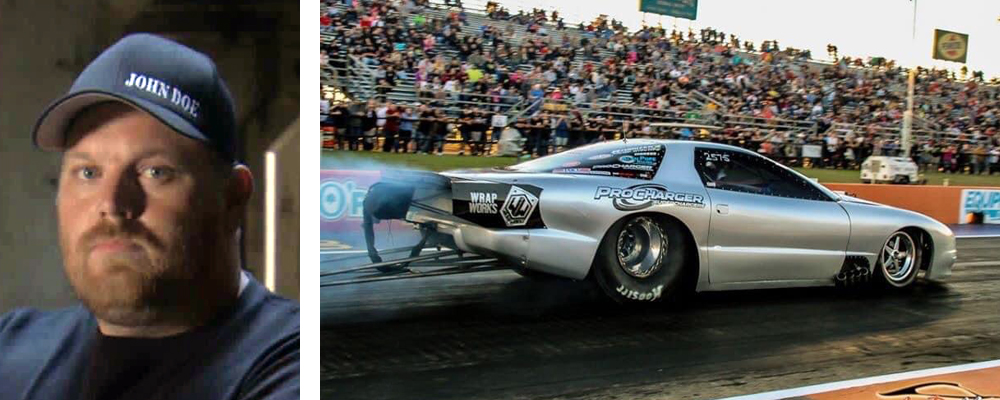Make The Case: Prepped vs. No-Prep Drag Racing

With grassroots credibility, big payouts, and the prospect of television notoriety, it’s no surprise that interest in no prep-style racing has skyrocketed over the past few years. Born out of street racing, for many it’s seen as a counterpoint to the high costs and strict regulations of series operated by the “old guard” sanctioning bodies. To others, it’s a risky alternative that prioritizes high-stakes drama over safety. But as our advocates illustrate here, the differences between prepped and no-prep racing ultimately seem to point to different ideological perspectives about what makes drag racing compelling.
PREPPED DRAG RACING ADVOCATE:
ROGER CONLEY,
RC2 MOTORSPORTS
–
The reality is that an unprepped surface is a lot more dangerous than a prepped one is. That’s just the nature of the beast. The level of grip is much lower, and because of that, it’s a lot easier to lose control of the car.
I’d also argue that a prepped surface is easier on parts. You’re using the car as it was designed to be used, and there really isn’t a template for a no-prep car design (other than making the car as light as you can).
More often than not the engine, transmission, suspension, and other components of a purpose-built race car have been developed to be used on a prepped track. You have to manipulate those parts to make them work on an unprepped track—you have to change torque converters, tires, suspension setups, and so on to get that car to work on a surface it wasn’t originally designed for.
No prep is also attractive to a lot of folks as this is a budget-friendly alternative to traditional prepped drag racing, and while that might be true at the ground floor, the costs quickly go up as you climb the ranks and the stakes are raised. At a certain point it becomes about bringing as much power to the table as you can while being able to manage it, and sometimes that’s a tall order. When you watch this kind of racing on TV, you start to notice that they wreck a lot of high-end cars at these events.

I think there will always be an audience for no-prep racing, but in my opinion, you’ll never see it eclipse traditional prepped drag racing. Part of the reason for that is because, unless they’re on TV, you’re not going to find a no-prep guy who can attain professional-level sponsorship. For example, if a turbocharger company like Harts wants to break into the drag racing world, how do they do that through no-prep racing? Potential customers want to know and understand the performance advantage of the product, and without ETs, there’s no evidence of the benefits.
Without numbers, the no-prep guys are just really limited in terms of what they can do for their sponsors. They might be winning, but when it comes to a customer’s $10,000 investment, those customers aren’t going to just rely on someone’s reputation or how well they did at one event. They want to see racers who are running similar combinations to their own, but their trap speed is five miles per hour faster. That’s what makes them say, “I need that.”
And from the perspective of track operators, no-prep events have the advantage of, well, minimal track prep. You’re not on the hook for four or five 55-gallon drums of traction compound, and there’s less staff needed in general.
But the flip side is that the crowds are typically smaller—it’s more of a niche audience who are really into this style of racing. Without ETs or any kind of information about the runs, the appeal isn’t very strong for someone who isn’t already very familiar with how these cars operate. For your average spectator at an NHRA event, they at least have some context to understand the performance. “Wow, that guy just went 200 miles per hour in a quarter-mile!”
I think both prepped and no-prep drag racing will continue to run and evolve concurrently, but the crossover interest for racers, organizers, and fans is pretty minimal.
NO-PREP DRAG RACING ADVOCATE:
SCOTT TAYLOR,
DIRTY SOUTH NO-PREP SERIES
–
A lot of street racers are drawn to no-prep racing because it feels like familiar territory. For me, progressing from the street stuff, this just felt like a good place to compete with a solid field of cars and a supportive audience. It’s a balance between an NHRA-style environment and pure street racing. It’s more organized. And, of course, it also doesn’t hurt that the payouts have been huge at some of these events.
A lot of people frown on no-prep racing, but I’ve raced on both sides of the fence and, in some ways, I think prepped surfaces can be more dangerous at times. I know that sounds crazy, but hear me out: When you have a prepped race track, it can give you a false sense of security that nothing can go wrong—the car is not going to move around on you. But that’s not always the case, and if you come across a spot on the track that isn’t good, it can catch you off-guard. That’s rarely the case in no prep; you’re always paying close attention to how much grip you have. In my opinion, no-prep racing really is not as dangerous as it’s made out to be.
The fans are also a huge element of no prep’s appeal—there’s just a closer connection, and our personalities can come out a little bit more in the no-prep scene. As soon as we get back to the pits we’re out there talking to the fans, and I think that makes a huge difference. Obviously, the television coverage has had a huge impact on no prep’s visibility over the years, too, and that has helped bring the fans out to the track and inspired some of them to get to work on their own hot rods.

And because we’re running on an unprepped surface, it’s a test of both the driver and the tuner. There’s a lot of strategy involved with evaluating the surface and deciding how much power to put down, and I think the racing is a lot closer because of that. Organizers are also doing a lot to ensure parity among the car classes, and that seems to be paying off. Last year the first-place car was twin-turbo, second place was a nitrous car, and third was a car running a ProCharger. So the balance of performance is there.
At the end of the day, these fans are seeing this stuff going on out on the street, and then they notice that folks like us are doing no-prep events, and that’s why no-prep racing continues to grow. It’s breathing new life into the sport, and everyone is benefiting from it. When I first started doing this, I never could have imagined that it would get as big as it has, or that we’d be running for $100,000 at a one-day event. No prep has definitely hit its stride, and it’s not going away any time soon.
 MEMBERSHIP LOGIN
MEMBERSHIP LOGIN JOIN PRI
JOIN PRI


